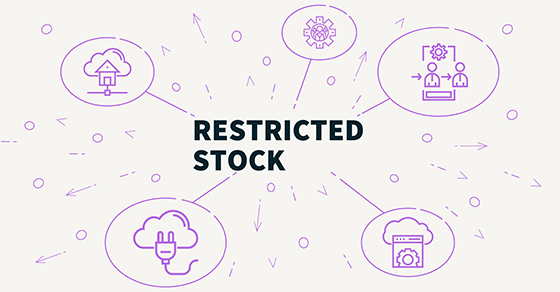

Restricted stock awards are a popular way for companies to offer equity-oriented executive compensation. Some businesses offer them instead of stock option awards. The reason: Options can lose most or all of their value if the price of the underlying stock takes a dive. But with restricted stock, if the stock price goes down, your company can issue you additional restricted shares to make up the difference.
Restricted stock basics
In a typical restricted stock deal, you receive company stock subject to one or more restrictions. The most common restriction is that you must continue working for the company until a certain date. If you leave before then, you forfeit the restricted shares, which are usually issued at minimal or no cost to you.
To be clear, the restricted shares are transferred to you, but you don’t actually own them without any restrictions until they become vested.
Tax rules for awards
What are the tax implications? You don’t have any taxable income from a restricted share award until the shares become vested — meaning when your ownership is no longer restricted. At that time, you’re deemed to receive taxable compensation income equal to the difference between the value of the shares on the vesting date and the amount you paid for them, if anything. The current federal income tax rate on compensation income can be as high as 37%, and you’ll probably owe an additional 3.8% net investment income tax (NIIT). You may owe state income tax too.
Any appreciation after the shares vest is treated as capital gain. So, if you hold the stock for more than one year after the vesting date, you’ll have a lower-taxed long-term capital gain on any post-vesting-date appreciation. The current maximum federal rate on long-term capital gains is 20%, but you may also owe the 3.8% NIIT and possibly state income tax.
Special election to be currently taxed
If you make a special Section 83(b) election, you’ll be taxed at the time you receive your restricted stock award instead of later when the restricted shares vest. The income amount equals the difference between the value of the shares at the time of the restricted stock award and the amount you pay for them, if anything. The income is treated as compensation subject to federal income tax, federal employment taxes and state income tax, if applicable.
The benefit of making the election is that any subsequent appreciation in the value of the stock is treated as lower-taxed, long-term capital gain if you hold the stock for more than one year. Also, making the election can provide insurance against higher tax rates that might be in place when your restricted shares become vested.
The downside of making the election is that you recognize taxable income in the year you receive the restricted stock award, even though the shares may later be forfeited or decline in value. If you forfeit the shares back to your employer, you can claim a capital loss for the amount you paid for the shares, if anything.
If you opt to make the election, you must notify the IRS either before the restricted stock is transferred to you or within 30 days after that date. We can help you with election details.
Important decision
The tax rules for restricted stock awards are pretty straightforward. The major tax planning consideration is deciding whether or not to make the Section 83(b) election. Consult with us before making that call.

